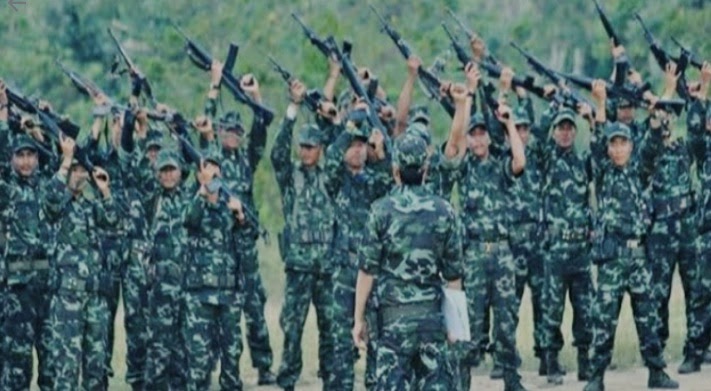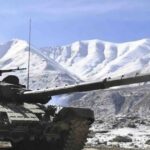
Book Title: Homeland Security in India: Violence, Order and the State
Edited by: Amit Ahuja and Devesh Kapur
Publisher: Oxford University Press, 2023
Length : 393pages
By Vikas Gupta
Defence News of India, 16 Mar 23
The Indian army has spent more time and effort fighting separatist insurgencies than any other contemporary army. It started by fighting the Naga separatists since 1956, then the Mizo rebels for two decades, from 1966 to 1986. In 1971, even as it prepared for war with Pakistan, the army took part in a major operation against the Naxalite Maoist rebels in eastern India. . After driving out Pakistan and liberating Bangladesh in 1971, the army tackled new insurgencies in the states of Manipur and Tripura. In the 1980s and 1990s, the military was called in to fight Sikh separatists in Punjab, Tamil guerrillas in Sri Lanka; then the Kashmiri separatists and the Pakistani jihadists in Jammu and Kashmir (J&K), while controlling the various insurgencies in the North-East.
With the sole exception of the 1987-1990 counterinsurgency operation in Sri Lanka against the Tamil Tigers, each of these campaigns took place within India’s borders. Indian soldiers and armed police have paid a heavy price, as evidenced by the growing number of military deaths. Between 1947 and 1990, the army lost 1,902 men in internal security operations. Casualties tripled over the next two decades, when 6,206 soldiers died fighting the insurgents.
Yet it is only now that a comprehensive study has emerged of India’s experiences with homeland security. In this edited volume, Amit Ahuja and Devesh Kapur – two of America’s most insightful academic writers on Indian security issues – have brought together in 15 chapters the work of 18 scholars (including themselves), journalists and practitioners who have explored various dimensions of India’s domestic politics. security. The thoughtful distribution of subtopics among the authors has successfully ensured that the subject is covered in breadth as well as in depth.
In the opening chapter, the editors briefly list various dimensions of homeland security – including armed separatism, organized crime, political and electoral violence, communal violence, labor disputes, homicides, gender-based violence, etc – before focusing on a state vision of internal security. safety as the primary focus of the book. They say at the beginning: “This book has a narrower focus: how the Indian state has handled the central concern of internal security – violence and order”.
As with all the academic work of MM. Ahuja and Kapur, this book offers a cornucopia of invaluable data. It includes 47 charts on various topics such as breakdown of casualties of security forces; police training and modernization; comparisons of numbers between the army, armed police and paramilitary forces; police to population figures in Indian states and reveal breakdowns of the growth of the security worker sector in the country. There are also 10 tables of data such as the breakdown of central government spending on police and a landscape of security work by state in India.
An interesting chapter titled “Internal Security and the Constitution of India” explores the legal, institutional and financial framework within which the security forces are required to operate. The framers of India’s constitution established a strong center, with a powerful executive government that had the tools to act decisively against threats to internal security. Additionally, there is a series of anti-terrorism (read preventive deterrence) laws that the state has crafted citing negative events. Shortly after the assassination of Indira Gandhi, the government passed the Terrorist and Disruptive Activities (Prevention) Act 1985, or the infamous TADA. This remained in law for a decade, until it was repealed in 1995. Following attacks on the Indian Parliament in 2001, TADA was replaced by the Prevention of Terrorism Act 2002 ( called POTA), which itself was modeled on an infamous Maharashtra. State Law: Maharashtra Organized Crime Control Act 1999 (MCOCA). Public criticism of POTA led to its repeal, but the more draconian aspects of POTA remained, enshrined in another controversial law: the Unlawful Activities (Prevention) Act 1967 (UAPA), which remains in the books.
No book on homeland security would be complete without discussing another “black law”: the Armed Forces (Special Powers) Act 1958, widely known as AFSPA. Originally enacted in 1942 by the British Raj to suppress the Quit India movement, the AFSPA was resurrected in 1947 and then enacted in 1958 by the government. AFSPA has become a watchword for human rights abuses in troubled areas. Anubha Bhonsle, a journalist who has studied AFSPA’s application in Manipur, explains how the law is imposed on an area after it is notified as a “disturbed area” under the Disturbed Area Act 1976.
Paul Staniland of the University of Chicago examines India’s internal security environment from the perspective of three groups of actors: armed insurgents, counterinsurgent militias, and disciplined political parties operating in militarized elections. His ominous conclusion on India’s internal security: “It is hard to think of a larger and more complex wave of insurgencies, over such long periods, in a state that has not failed.
Staniland notes that not all insurgencies are treated equally by New Delhi. J&K and Punjab had two main triggers that evoked harsh repression: both revolts were along minority religious divides and both represented challenges to the idea of a multi-religious and secular India. Second, both movements enjoyed strong support from Pakistan’s security services. This has heightened threat perception and encouraged a vigorous security response.
The general conclusion reached by most of the contributors to this excellent book is that India’s counterinsurgency posture is not a single set of rules mechanically applied to a situation. Rather, New Delhi’s response is calibrated according to the nature of the insurgency – for example, ethnolinguistic, nationalist or religious. The book presents a nuanced set of arguments and one that, with the thoughtfully curated data, will secure its place in the reference library of any serious South Asian security scholar.






